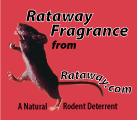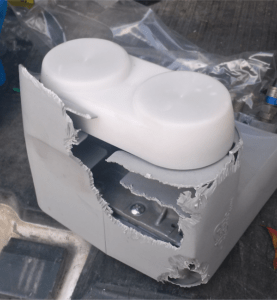

Check for large openings of all kinds that give rodents access points and travel routes. Seal up access entry points with Stainless Steel Pot Scrubbers and Spray Rataway Fragrance in the Stainless Steel Pot Scrubber including:

Other large openings that permit the entry of squirrels, mice, and rats include:
Once rodents have entered walls, they generally have ready access to much of a building via holes for utility pipes and wires in the framing and overhead suspended ceilings or other types of construction adjacent to utility enclosures.
Power lines have always been a favorite route of travel for rodents, especially roof rats and squirrels. Refuse and food-handling areas are likely to have the greatest rodent population.

Rataway Fragrance and Odorawaynow are exclusively sold through this website. They are not available in stores. We ship FREE anywhere in the USA. We also ship to many locations world wide. See our shipping terms on the Store page. We will ship today – Order Now! We can ship to military addresses: APO and FPO.
©1999-2023 Frederick J. Suddes, all rights reserved. Rataway Fragrance, Odorawaynow and Rataway.com are owned, operated and sold exclusively by Frederick J. "Rick" Suddes.
Google Reviews: December 2022
After having our car rewired after parking the weekend at a theme park in Orlando, i researched and found Rataway. Have used it with the waterproof additive ever since. Aksi on our AC lines outside our home and our rooftop satellite dish after we found the squirrels had chewed the plastic coverings. Soy is used in plastics now and the rodents can smell it. We spray our car and the plastics outside.
